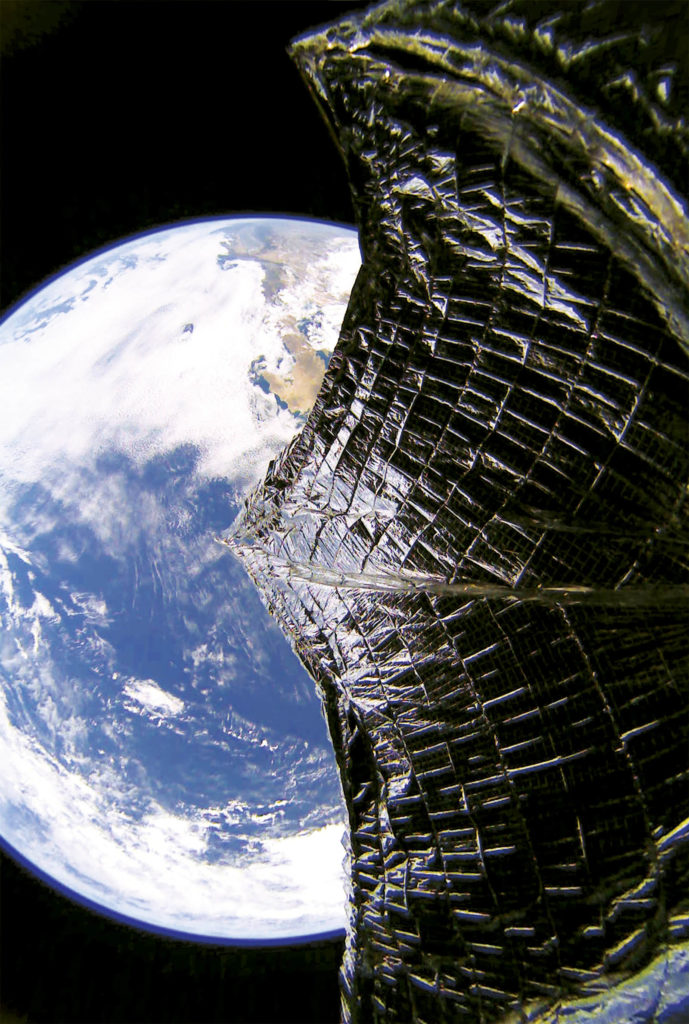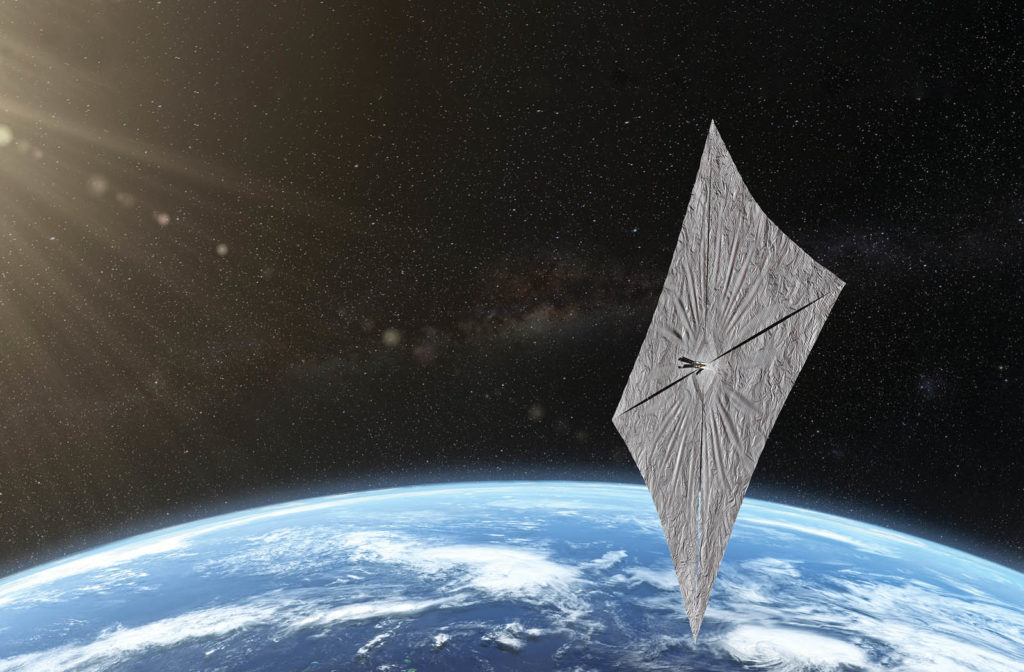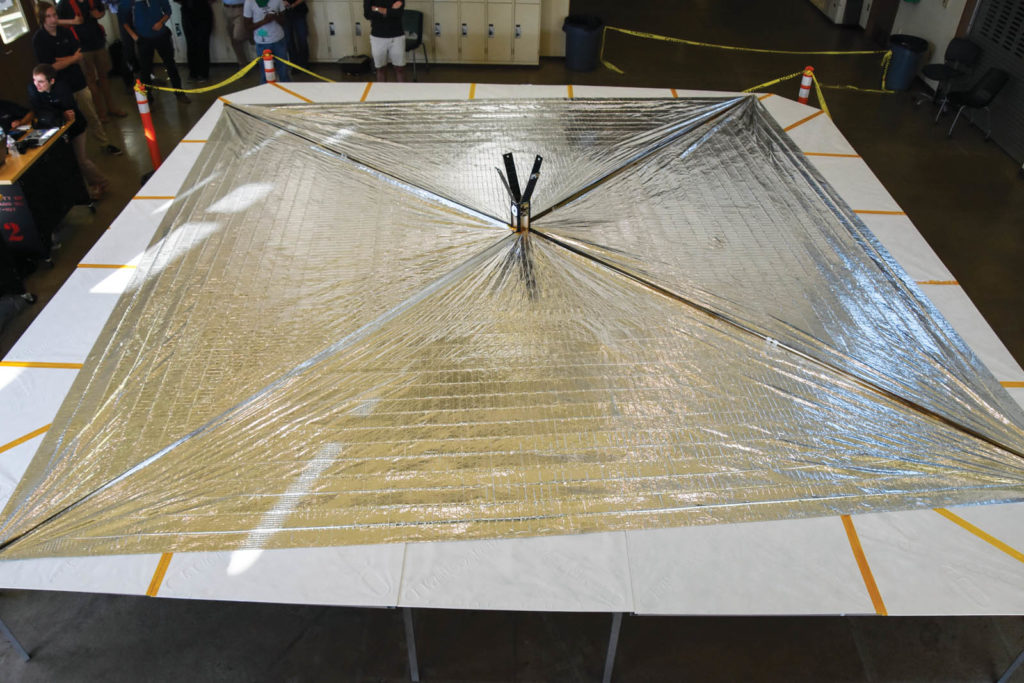
Scientists at The Planetary Society have demonstrated the power of solar energy with a spacecraft that orbits the earth fueled solely by sunlight. The LightSail 2 was developed for a CubeSat, a small, standardized satellite about the size of a loaf of bread that hitches a ride to space with larger payloads. It features four aluminized Mylar sails measuring a total of 344 square feet packed inside; each sail is just 4.5 microns thick, less than the width of a human hair.
The LightSail team’s goal was to demonstrate controlled solar sailing in a CubeSat by changing the spacecraft’s orbit using only light from the sun, something that’s never been done.

In space, LightSail 2’s solar arrays opened, revealing the inside of the satellite and unwinding four metallic booms to unfold the sails. It spent a month raising its orbit with the power of sunlight. After about four days, it raised its orbital high point, or apogee, by about 1.25 miles. The perigee, or low point of its orbit, dropped by a similar amount, which is consistent with pre-flight expectations for the effects of atmospheric drag on the spacecraft. The mission team confirmed the apogee increase could only
be attributed to solar sailing.

The spacecraft’s orbit raising phase was about two months; it is now deorbiting and will reenter the atmosphere in about a year. The Mylar sail may currently be visible for some observers at dusk and dawn. For more information, visit www.planetary.org.
 TEXTILES.ORG
TEXTILES.ORG


